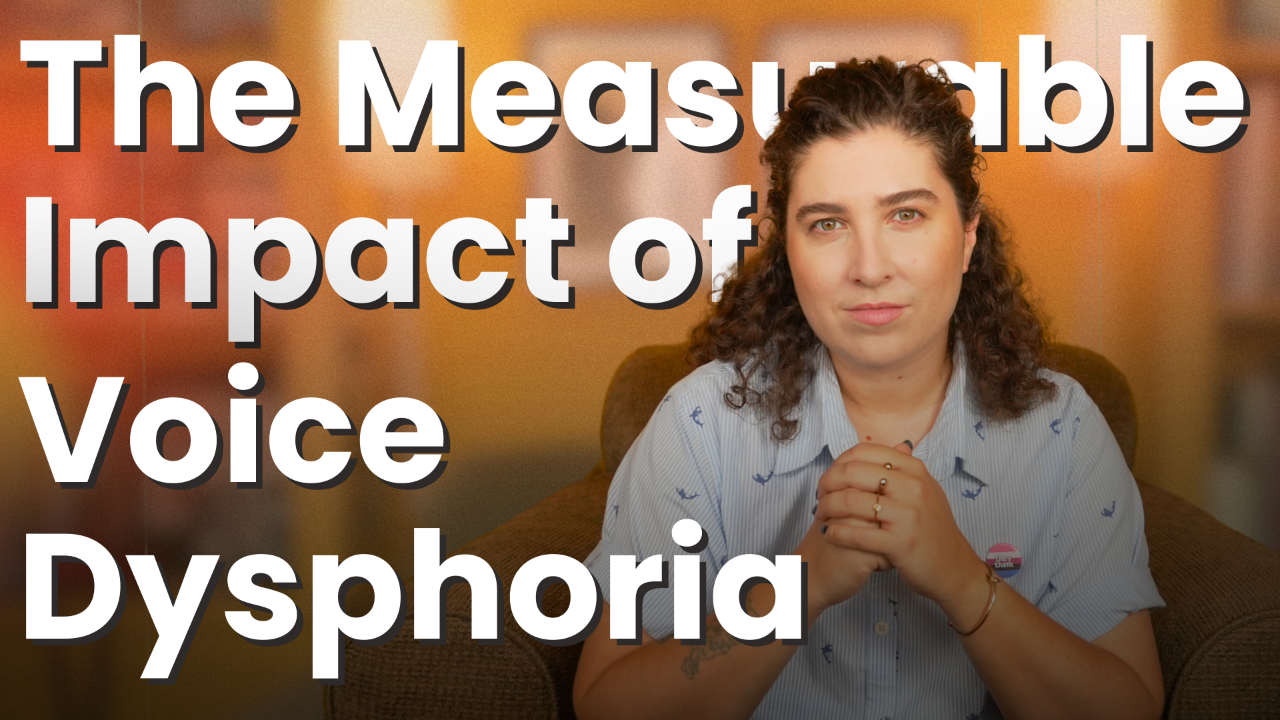Masculine vs. Feminine Voices: Which Is Harder to Master?
Jan 09, 2025
Welcome to the official blog for this week’s video! You can watch the video at the top of this post or read along for a detailed exploration of the nuances of trans voice training. Don’t forget to sign up for my newsletter to get weekly videos and blog posts sent straight to your inbox!
The Big Question: Masculinizing vs. Feminizing Your Voice
As a gender-affirming voice teacher, one of the most common questions I hear is:
“Is it harder to masculinize or feminize your voice?”
This question often sparks debate, and it’s easy to assume that one group has it easier than the other. However, the reality is far more nuanced, and voice training presents unique challenges for everyone. Let’s break down some myths and take a closer look at the specific difficulties involved.
Voice Myths: What You Need to Know
When it comes to transitioning the voice, misconceptions are common. One of the most pervasive myths is about how easy it is for trans men to achieve a masculine voice:
Myth: "Trans men can just take testosterone, and their voices will masculinize effortlessly."
While testosterone does lower the pitch of the voice for most transmasculine people, it’s not always a perfect solution. Studies show that 21% of people on testosterone are not completely satisfied with their voice and later seek voice training to address their concerns. (Ziegler, A., Henke, T., Wiedrick, J., & Helou, L. B. (2018). Effectiveness of testosterone therapy for masculinizing voice in transgender patients: A meta-analytic review. International Journal of Transgenderism, 19(1), 25–45.)
Additionally, not everyone wants to take testosterone but still desires a more masculine-sounding voice. This can present unique challenges, especially given the historical lack of resources for transmasculine voice training. (Adler, R., Hirsch, S., & Pickering, J. (2018). Voice and Communication Therapy for the Transgender/Gender Diverse Client: A Comprehensive Clinical Guide.)
The truth: Testosterone can help, but it’s not a guaranteed or one-size-fits-all solution. Many trans men still benefit from training to fully achieve their voice goals. (Which is why I made a course about it!)
Breaking It Down: Voice Training Challenges
To understand the challenges involved, let’s compare three key characteristics of voice training: pitch, resonance, and vocal weight.
1. Pitch
Pitch refers to the highness or lowness of the voice.
- Trans Women: Achieving the target pitch range often requires blending registers (head and chest voice) and avoiding "flipping" into the upper register. This takes significant precision and practice.
- Trans Men: Without testosterone, transmasculine individuals have fewer available pitches, which limits their ability to lower pitch naturally.
Verdict: Both face unique challenges. Trans men have fewer pitches available (without testosterone), while trans women often face a harder time achieving their target range.
Want to learn more about how pitch works in trans voice training? Check out my video, Gender-Affirming Voice 101: Pitch.
2. Resonance
Resonance refers to the brightness or darkness of a vocal sound and is directly linked to the size of the vocal tract.
- Trans Women: Achieving a brighter sound involves raising the larynx, a challenging and nuanced skill requiring muscle development and relaxation techniques.
- Trans Men: Lowering the larynx for a darker sound is more natural, as it mimics the position during yawning.
Verdict: Harder for trans women because of the sustained muscle engagement required.
Curious about how to adjust resonance? Watch my video Gender-Affirming Voice 101: Resonance for more tips and demonstrations.
3. Vocal Weight
Vocal weight measures the relative thickness or thinness of a sound.
- Trans Women: Lightening the voice often reduces tension and feels easier to manage.
- Trans Men: Adding vocal weight without increasing tension is tricky and can lead to harmful strain.
Verdict: Harder for trans men due to the difficulty of safely increasing vocal weight.
If you’d like to explore vocal weight further, I dive into it in my video Gender-Affirming Voice 101: Vocal Weight.
So, Who Has It Harder?
Drumroll, please…
It’s a tie! 🥳
Voice training is equally challenging for everyone, but the nature of those challenges varies depending on individual goals and starting points. Comparing journeys often leads to frustration rather than progress. Instead of focusing on who might have it easier, it’s more helpful to concentrate on your own unique path and celebrate the progress you’ve made.
Final Thoughts: Supporting Each Other
At this moment in history, our time is better spent supporting one another within the trans community rather than comparing struggles. Everyone’s transition journey is valid, and every individual deserves access to resources that help them find comfort, safety, and gender euphoria in their voice.
Ready to Explore Your Voice?
I offer free resources on my YouTube channel and freebies library to help trans folks achieve voice comfort, safety, and gender euphoria. You’ll also find links to specialized courses for feminization and masculinization.
Want to stay connected?
Sign up for my newsletter to get weekly videos and blog posts delivered straight to your inbox. Click here to join now!
Thanks for reading! I’m Renée, and I hope this post has inspired you to take the next step in your voice journey.
Want weekly tips, resources, and insights on trans voice training? Sign up for my newsletter and get the latest content delivered straight to your inbox. It's free!









